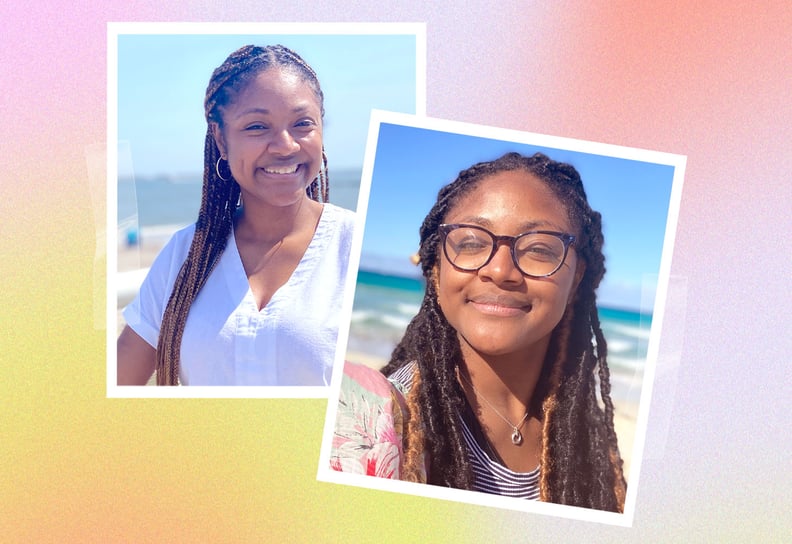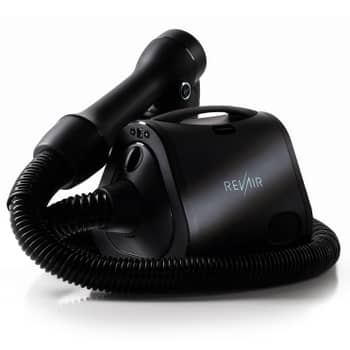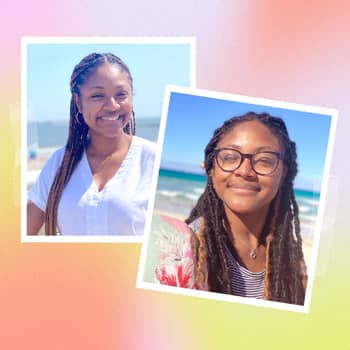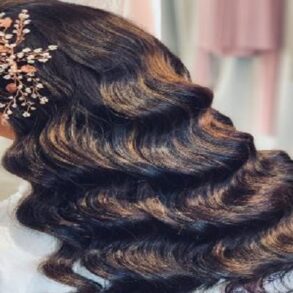
As POPSUGAR editors, we independently select and write about stuff we love and think you’ll like too. If you buy a product we have recommended, we may receive affiliate commission, which in turn supports our work.
I’m not going to lie: my journey to embracing my natural hair has been a complex one. I went natural when I was in high school (2003-2004), years before the natural-hair movement became popular in my communities. However, the hairstyles I was able to do on my own as a broke teenager were limited. I jumped at the chance to get a wash and set when I could foot the bill, but I usually resorted to phoning a friend to do my hair, especially when my sister didn’t want to use me to put her cosmetology skills to use.
Unlike most Latine families — including those with members of African descent and textured hair — protective styles were embraced and in some cases preferred in my Honduran household growing up. I know that’s not the norm for many Latinas who look like me or within Latine culture overall. Most of us are taught from a very young age that 3B to 4C curl patterns are bad hair, or what was often referred to as “pelo malo.” Many of us were taught to take every measure possible to whitewash our strands. Society and anti-Blackness have forced many of us to do any and everything to conceal our Blackness by all means necessary — from constant blow-drying to overusing la plancha to seeking the newest hair treatments, like the Brazilian keratin. It was all encouraged in an effort to hide away our natural curls and coils and to adhere to the European standards of beauty.
As a teen, I rocked cornrows and box braids with my real hair — no extensions — as if my life depended on it. I’m talking designs galore! If y’all remember back in the day how folks went wild over Allen Iverson’s hairstyles on the court — that was me. Even though I felt cute and confident (and my family accepted my obsession with braids), I would still experience my fair share of microaggressions regarding my hair. I was constantly finding myself having complex conversations around what was considered “good hair” versus “bad hair.” While there were family and friends who embraced my braids and protective hairstyles, there were still quite a few who tried to convince me that I looked my best when I wore my hair straight. It was frustrating, to say the least, but I still did as I pleased when it came to how I chose to wear my hair.
Though I grew up in a Latine family where I was taught to embrace my Blackness, there were still moments of anti-Blackness that would creep up.
Though I grew up in a Latine family where I was taught to embrace my Blackness, there were still moments of anti-Blackness that would creep up. One day, we could be celebrating my new set of cornrows, and the next, I was told not to stay in the sun too long because of the fear that I would get “too dark.” In my essay “Half In, Half Out: Orbiting a World Full of People of Color” from my anthology collection, “Wild Tongues Can’t Be Tamed,” I write about how I was told to put bleaching cream on my knees and elbows so they wouldn’t get darker. This is evidence that while my family and community embraced and celebrated our Blackness, there were still problematic ideas about what was considered beautiful.
Whenever I wore my hair curly and out, Mami was quick to say things like, “Comb your hair,” or she’d suggest I pull it back in a pony or do moñitos. This was all code for “tame your mane.” While she was supportive of protective hairstyles, there was always something about my curly hairstyles that made her twist her lips to tell me I didn’t look presentable.
As a teen, I found myself taking my mother’s words to heart. I would wash my hair the night before, use olive oil or products like Blue Magic or a leave-in conditioner, and then braid my hair in cornrows myself. I would let my hair air-dry at home, then throw on a scarf at night. I’d walk to school in the morning, go into the bathroom, and take down my braids before going to class. It was a process, but it left me with looser curls that felt more manageable to me. It was also a way for me to sneakily rock my curls without having to hear Mami’s mouth at home.
Whenever I chose to wear my hair straight, doobies saved me more times than I can count. The minute humidity, sweat, or rain interacted with my natural hair, all hell broke loose. To keep my blowouts intact, I would wrap my hair around my head and secure it with bobby pins and then add a black silk scarf to protect my head and prevent my hair from frizzing up.
But once I started embracing my natural hair, head wraps and braids became my go-tos. Not only do they keep my natural strands protected, but I also love how rooted they are in Black culture. African head wraps have been around for ages, and their impact has largely influenced Latine culture. They have served as symbols of resistance, protection, spirituality, and so much more. Black women have been fighting to wear their hair however they please for years. It wasn’t until the CROWN Act was passed just last year that we were finally given the freedom and the protection to wear our tresses how we want.
When I think about braids and the women doing my hair, I think about how they are literally weaving protection over my precious hair strands.
When I think about braids and the women doing my hair, I think about how they are literally weaving protection over my precious hair strands. Every woman in my immediate family and beyond has a trusted scarf, head wrap, or preferred braided hairstyle that we go to. These styles especially come in handy when you’re about to go on a vacation, have surgery, give birth, or have any other occasion where you don’t want to have to worry about styling your hair every day.
I feel like my family has been way more accepting of my natural hair when it’s in protective styles. I think it has something to do with the neatness of the lines and parts when it comes to braids and moñitos. There’s this sense of control we feel when every strand of hair is in its place. When I rock my curls naturally, I feel the most free and the most me. But caring for natural hair is a labor of love, so it’s become a self-care routine for me to find comfort in protective styles. It also allows me to not have to worry about caring so meticulously for my hair on a daily basis.
One of the investments I made to help with upkeep for my protective styles, and even my curls, has been the Rev Air ($399) — it’s been a game changer. I can wash my braids and dry them with zero issues and zero damage. I generally will use peppermint and rose oils on my scalp in the mornings, because they help keep the blood flowing and also just smell really good. I keep my hair hydrated and feeling healthy with the Ors Olive Oil & Coconut Oil Spray ($8), and at night, I spray the Head & Shoulders Royal Oils Instant Soothe Scalp Elixir ($11). In between co-washes, I use the Camille Rose Sweet Ginger Cleansing Rinse ($15). It always makes my hair feel fresh and clean.
Growing up, I never wore weaves or wigs, but most of the Latinas in my life did. And now that I’m older, I find myself having fun trying new protective styles. I even rocked a lavender wig that I never thought I could pull off. Hair is the way I choose to express myself. I want the same for my daughter. Having her see me rock my natural curls and protective styles shows her that she has options. She can do anything she wants with her precious crown, but it should be protected and cared for at all times. I let her run her fingers through her hair so she can feel the texture. During bath time, I let her wash her hair, and these days, we are practicing having her comb her hair all on her own. I want her to have a lovely relationship with her hair, a healthier one than what I had with mine growing up. I want her to own her Blackness and love everything that makes her uniquely her.
This post was originally published on this site be sure to check out more of their content.










